Your best friend… until you can’t touch him without making that face. You know the one.
Pet parents, let’s be honest: we’ve all tried to pretend our dog is the reason they smell like a dumpster behind a seafood restaurant, when really, we’re just behind on bath time. (Nice try though.) But keeping your pup clean isn’t just about saving your nostrils. It’s about healthy skin, a shiny coat, and protecting their sacred right to nap on your pillow without protest.
At Off Leash K9 Ventura, we train dogs to be their best selves, and that includes looking (and smelling) the part. A fresh pup isn’t just more cuddly; they’re healthier and more confident too.
So how often should I bathe my dog? It depends on their fur, their lifestyle, and their adventurous habits. (Yes, we see you, dead fish enthusiasts.) Let’s break it down by coat type, skin needs, and the messy realities of dog life.
Why Bathing Frequency Matters
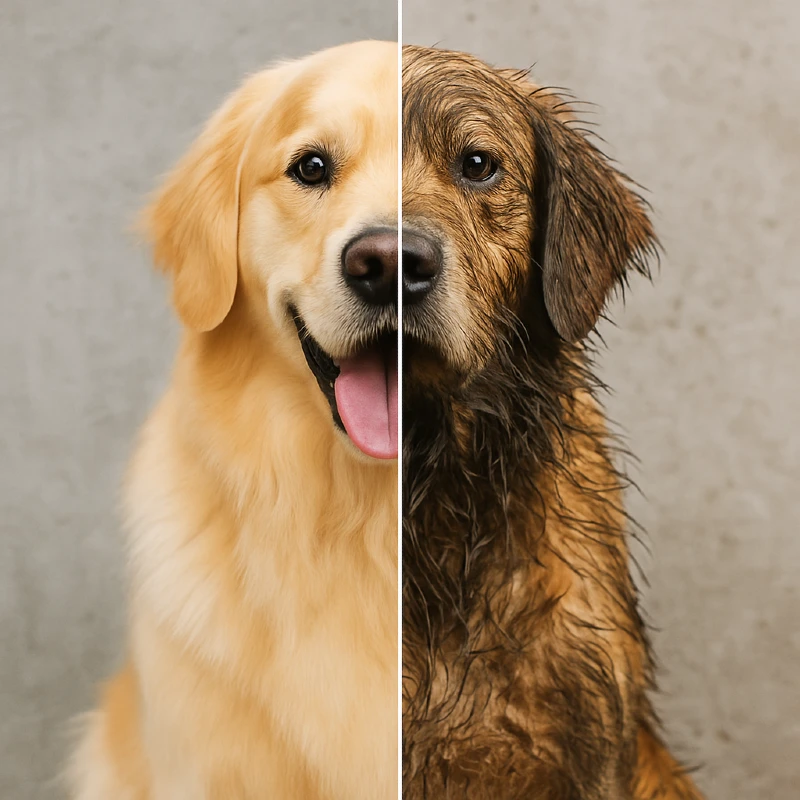
Bathing isn’t just about keeping your dog smelling fresh. It’s about balancing natural oils, preventing skin problems, and maintaining a healthy coat. Too many baths strip essential oils, while too few turn your pup into a walking science experiment.
If your dog’s nickname is Stinky Pup, don’t panic. Sometimes, a good brush or wipe-down buys you extra time between baths.
Understanding Your Dog’s Skin
Dog bathing isn’t just about scrubbing dirt away. It’s about knowing what’s underneath the fur. Most dogs have either dry, oily, or sensitive skin, and each type reacts differently to bath routines and products. Paying attention to what your dog’s skin needs can help you avoid flare-ups, itching, and other issues that come from overwashing or using the wrong shampoo.
Dry Skin Means Flakes and Itchiness
Dry skin is more common than you’d think. You’ll often spot flakiness and signs of discomfort, especially after bathing.
- Use a moisturizing shampoo to hydrate.
- Avoid overwashing.
- Watch for cracked or irritated spots.
Oily Skin Traps Dirt and Odor
Greasy coats hold onto odor and debris. If your pup feels like they’ve been dipped in oil, they probably need more frequent baths.
- Stick with a degreasing shampoo.
- Rinse thoroughly.
- Avoid heavy conditioners that worsen buildup.
Skin Irritation & Bathing Risks
Too many baths can backfire. Overbathing removes natural oils and throws off the balance of your pet’s skin, leading to redness and itchiness. If your dog starts scratching more after baths, ask your veterinarian about switching to a hypoallergenic shampoo.
Health Conditions That Affect Bathing
Some pups need special care. Dogs with allergies, infections, or chronic skin problems may require medicated shampoos and targeted care.
- Always follow your vet told instructions.
- Use gentle products only.
- Watch for flare-ups after exposure to grass, pollen, or fleas.
Decoding Your Dog’s Coat Type
Your dog’s coat plays a huge role in how often they need to be washed. The thicker, longer, or oilier the coat, the more likely you’ll need to break out the shampoo sooner rather than later. On the flip side, less frequent baths are often better for dogs with short or sleek coats. Let’s look at how different coat types impact bath schedules.
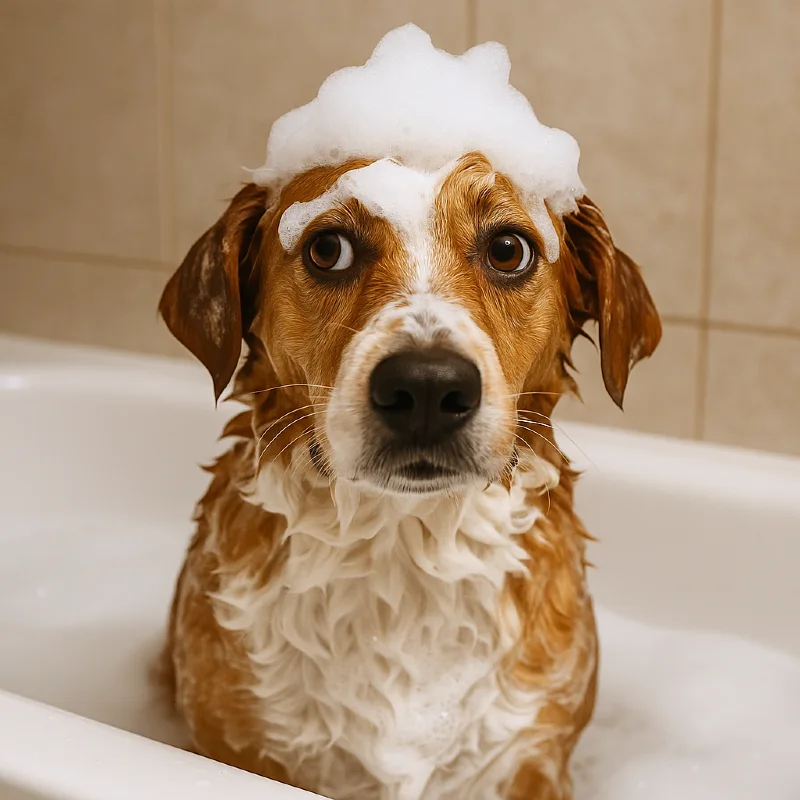
Long-Haired Breeds: High-Maintenance Floofs
Golden Retrievers, Collies, and other long-coated breeds need regular attention. Dirt and tangles don’t stand a chance against their fur.
- Bathe every 4–6 weeks.
- Keep up with regular brushing.
- Use a conditioner made for thick, double-layered coats.
Short Coats: The Low-Key Crew
Labradors, Beagles, and most short hair breeds don’t need as many baths.
- Bathe every 2–3 months.
- Spot-clean as needed.
- A basic brush helps reduce dander and odor.
Hairless Dogs: The Grease-Prone Oddballs
Let’s talk hairless breeds. These pups produce more oil and need frequent cleaning to avoid clogged pores.
- Bathe weekly with gentle soap.
- Moisturize afterward.
- Avoid overexposure to the sun.
Soft Coats vs. Oily Coats
- Soft coats like those on a Maltese benefit from hydrating products that leave them silky.
- Thick coats or oily coats, like on a Cocker Spaniel, need deep-cleaning formulas and a brush that reaches the undercoat.
How Your Dog’s Lifestyle Affects Bath Time
Bathing needs aren’t just about the breed or the coat. Your dog’s daily routine makes a big difference. A high-energy pup who rolls in every puddle will need more baths than a chill dog who lounges on the couch. By matching your schedule to your dog’s lifestyle, you can keep them clean without overwashing.
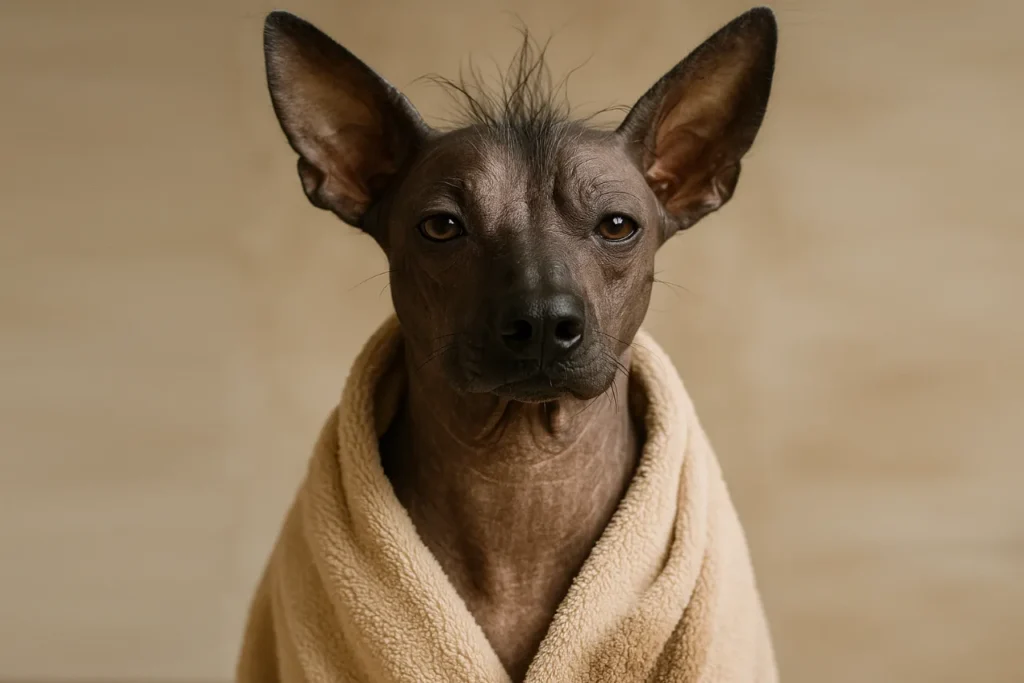
Couch Potatoes May Need Fewer Baths
Lazy pups who rarely venture beyond the porch may only need to bathe your dog a few times a year. Clean paws, clean home.
- Use pet wipes for paws and bellies.
- Keep fur brushed to remove loose hair and dead skin cells.
- Watch for sneaky allergens from the backyard.
Active Dogs Need More Frequent Washes
If your canine companion lives for hikes, puddles, and questionable substances, you’ll want to keep that shampoo nearby.
- Monthly baths are the minimum.
- Rinse with plain water after every muddy adventure.
- Check ears and paws after outdoor romps.
Very Active Dogs: The Mud Magnets
When your dog’s hobby is rolling in everything they shouldn’t, expect to wash more often. Use products tailored to the dog’s lifestyle and coat type to avoid drying them out with as many baths as it takes.
Picking the Right Dog Shampoo
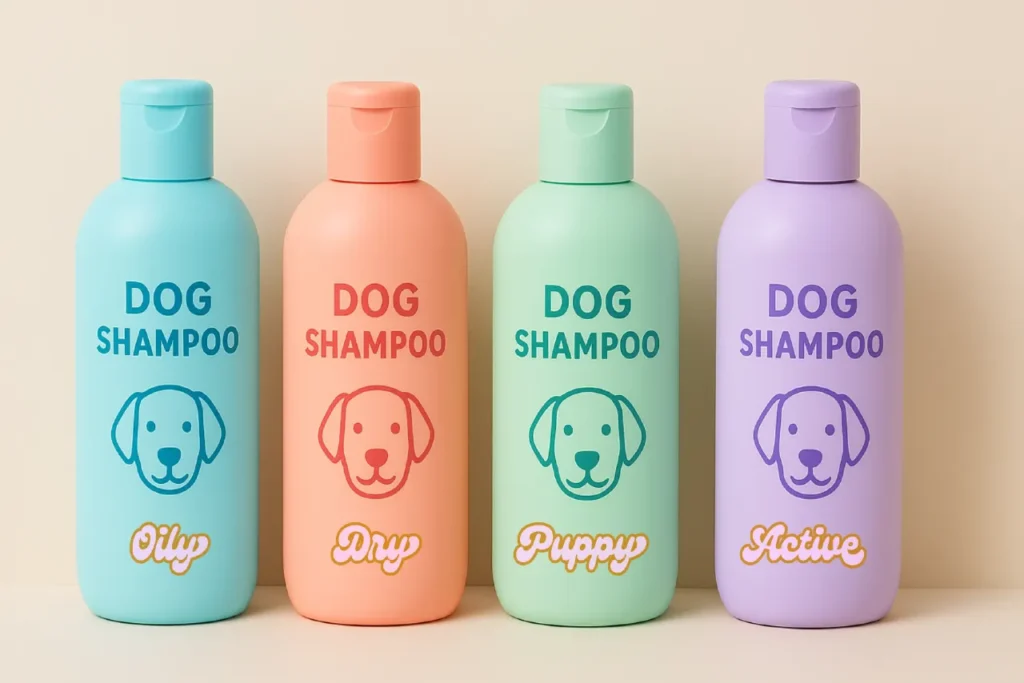
Choosing the right shampoo isn’t always easy, especially with so many options on the shelf. You’ll want to consider your dog’s coat texture, skin type, and any sensitivities. The wrong product can lead to dryness or discomfort, especially if you’re doing weekly baths for oily or hairless breeds. Getting it right makes bath time faster, safer, and more effective.
Never Use Human Shampoo
Human products can mess with your dog’s pH balance and lead to irritation. Stick with pet-safe options that target their specific needs.
Hypoallergenic Shampoo for Sensitive Skin
If your dog has allergies or gets itchy post-bath, a hypoallergenic shampoo is your best bet. These formulas avoid fragrances, dyes, and chemicals that can irritate pet’s skin.
Oatmeal Shampoo for Dry Coats
Oatmeal is soothing, natural, and ideal for dogs with skin conditions or dandruff. It’s a solid choice for pups with flaky patches or seasonal dryness.
De-Shedding Shampoos for Thick Coats
Breeds with thick coats like Huskies or German Shepherds benefit from de-shedding shampoos and brushes that reach the undercoat.
Bathing Schedules Made Simple
Some dogs love water. Some act like it’s lava. But no matter your dog’s attitude toward the tub, their age and health will impact how often they should be bathed. Younger dogs often tolerate frequent washing better than seniors, while older pups may benefit from gentler routines and less frequent baths. The time of year also matters more than most pet parents realize.
Puppies, Adults, and Seniors All Differ
- Puppies: Go easy. Once a month is usually enough while their skin adjusts.
- Adults: Stick to a plan based on coat type and activity level.
- Seniors: Aging dogs may need fewer regular baths unless there are mobility or bladder issues. Use non-slip mats and warm water.
Seasonal Adjustments That Make Sense
- Summer: Outdoor fun brings pollen, bugs, and dirt. Bathe more often.
- Winter: Dry air = dry skin. Bathe less and consider using a coat conditioner or humidifier indoors.
Grooming Between Baths
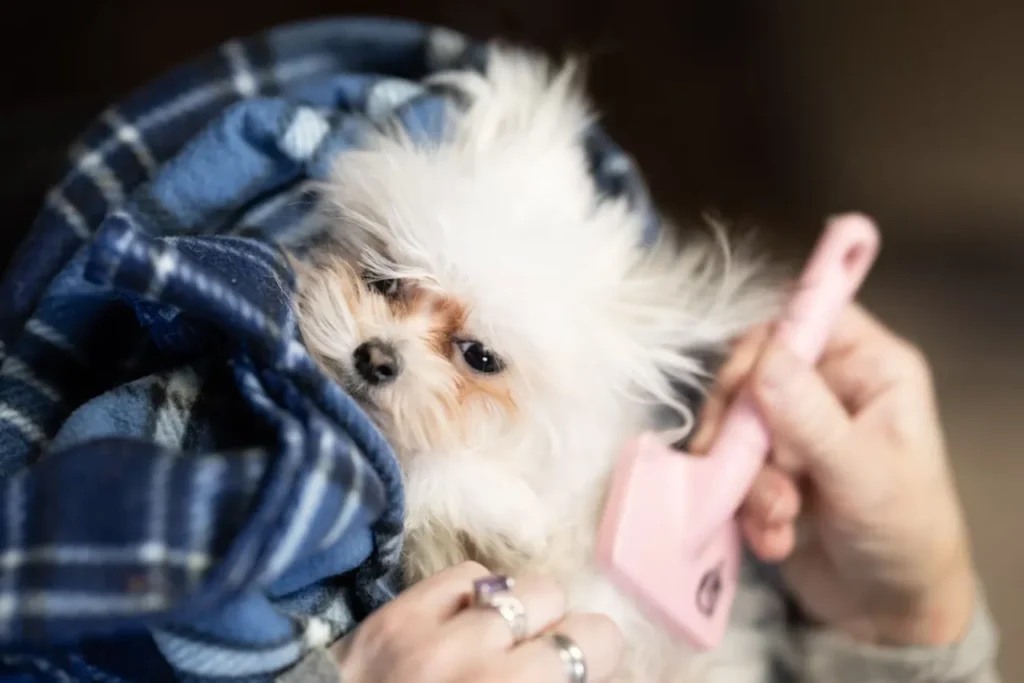
Even the cleanest dog can start to smell if grooming is ignored. Brushing, wiping, and light touch-ups help reduce odor and keep fur healthy between baths. Most dogs don’t need a full bath every time they get a little messy, and this is where a good groomer or at-home routine can make all the difference.
Regular Brushing Removes Dirt and Dead Skin
Regular brushing helps control shedding, removes debris, and spreads healthy oils. It’s also a bonding moment.
- Aim for 2–3 times a week.
- Adjust based on coat length and breed.
- Brushing helps reduce how often you need to wash.
Pet Wipes Help Spot-Clean Messy Dogs
For many dogs, pet wipes are a game-changer. Use them on paws, bellies, and even faces after meals or walks.
- Look for unscented options.
- Great for other dogs in multi-pet households who hate the bath.
De-Shedding Tools Keep Coats Healthy
A good rake or slicker brush can reduce mats, especially in long-coated breeds. Grooming regularly can extend the time between full baths.
The Off Leash K9 Ventura Difference
We don’t just do dog training in Ventura; we help create happy, healthy companions. If bath time becomes a battle, our trainers can:
- Desensitize dogs to grooming handling
- Teach calm tub behaviors
- Recommend local groomers who use positive methods
Because every dog deserves to feel their best, from obedience training to bath time.
Clean dog. Happy home. Better behavior. That’s the Off Leash K9 Ventura way.
Pet Parents, It’s Time to Bathe Your Dog
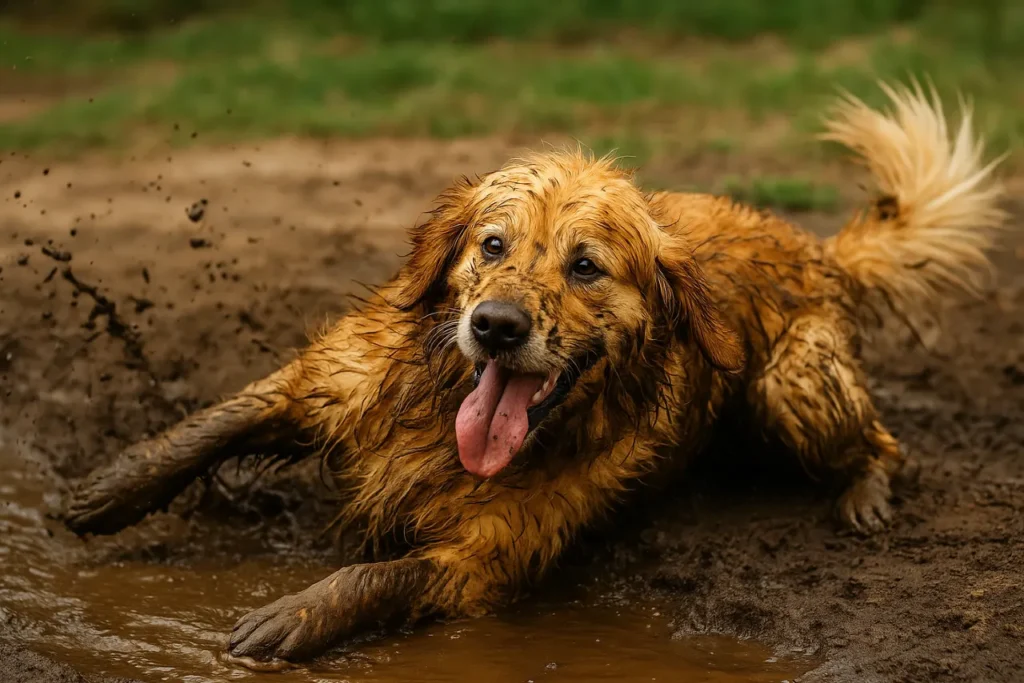
A clean dog is more than just a nice smell. It’s healthy skin, a happier pup, and way fewer side-eyes when they jump on your bed. (We both know who’s really winning here.)
Whether your dog is a high-maintenance floof, a dirt magnet, or a sensitive-skinned sweetheart, their ideal bath routine comes down to three things: coat type, lifestyle, and their questionable talent for finding the stinkiest things on earth. (Seriously, how do they always track down that one rotting thing in the park?)
At Off Leash K9 Ventura, we help dogs (and their humans) nail the basics, from obedience to grooming, so everyday life feels smoother for everyone. Because bath time shouldn’t be a battle, and your pup deserves to feel their best.
Let’s make it happen. Book a training session via our website or by giving us a call, and let’s turn your dog into the confident, fresh-smelling, well-behaved companion you’ve always wanted. (Yes, even the dead fish rollers.)
